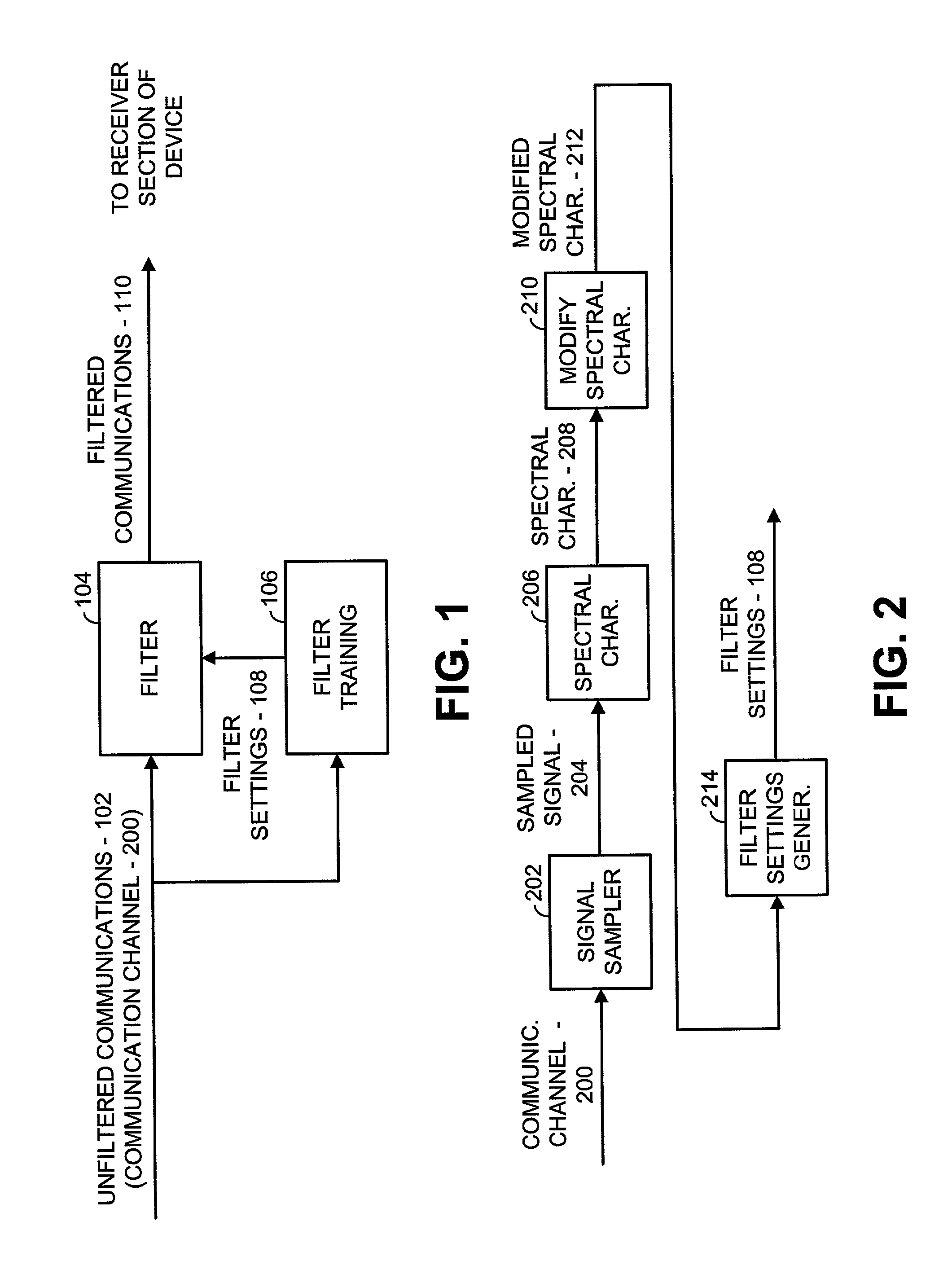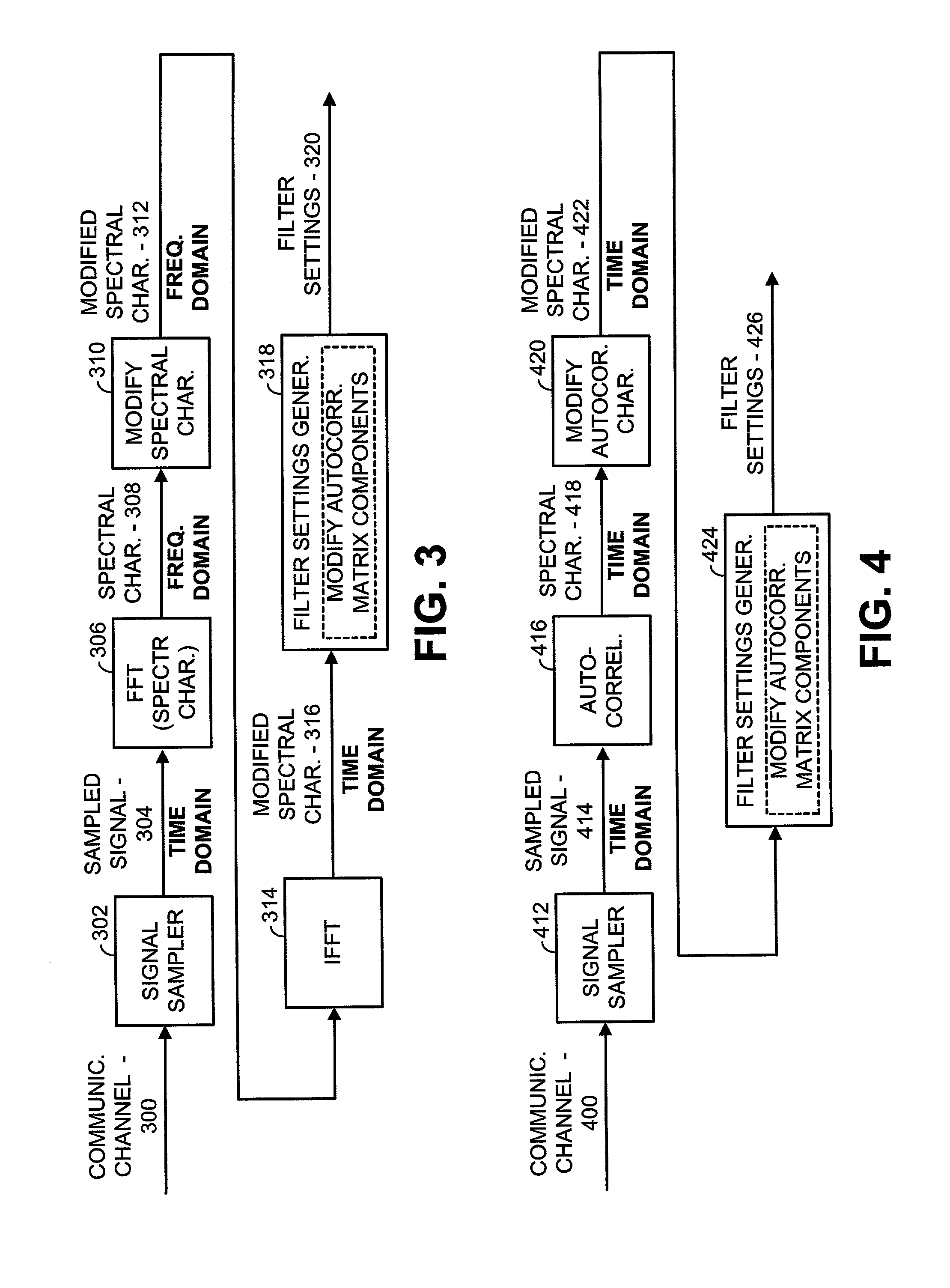Method for whitening colored noise in a communication system
a communication system and color-whitening technology, applied in the field of communication systems, can solve problems such as interfering signals in high-speed data communication systems, home networking systems, cable modem systems, etc., and achieve the effect of improving data throughput rates and improving the properties of inputs
- Summary
- Abstract
- Description
- Claims
- Application Information
AI Technical Summary
Benefits of technology
Problems solved by technology
Method used
Image
Examples
first embodiment
[0037] FIG. 1 is a simplified block diagram illustrating a narrow band interference cancellation filter (ICF) used in accordance with the principles of the present invention. According to the present invention, incoming unfiltered communications 102 are received on a communication channel and filtered using filter 104 to produce filtered communications 110. Filter settings 108, generated by filter training block 106, when applied to filter 104 remove narrow band interfering signals from the communication channel to produce the filtered communications 110. Thus, during normal operations, the filtered communications 110 are provided to the receiver section of a device in which the ICF resides. Because of the filtering operations of the present invention, the receiver is better able to operate on a signal of interest (desired signal) contained in the filtered communications 110 to extract data contained therein. The signal of interest, in most embodiments, is a carrier in a particular ...
PUM
 Login to View More
Login to View More Abstract
Description
Claims
Application Information
 Login to View More
Login to View More - R&D
- Intellectual Property
- Life Sciences
- Materials
- Tech Scout
- Unparalleled Data Quality
- Higher Quality Content
- 60% Fewer Hallucinations
Browse by: Latest US Patents, China's latest patents, Technical Efficacy Thesaurus, Application Domain, Technology Topic, Popular Technical Reports.
© 2025 PatSnap. All rights reserved.Legal|Privacy policy|Modern Slavery Act Transparency Statement|Sitemap|About US| Contact US: help@patsnap.com



